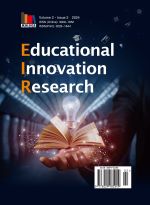Research on Teaching Mode of Programming Course
Keywords:
Teaching mode, Programming language, Python, C++Abstract
With the application and development of information technology, Internet applications have to be popularized in all walks of life. Under the background of “Internet+”, the teaching mode of computer programming course is discussed. At present, the teaching mode is diversified. In programming courses, case teaching plays an important role, and the influence of learning mode on teaching quality is particularly important. Here, different students learn programming knowledge at different levels, including beginner, intermediate, and advanced. For beginners, passive learning is an option to teach these students the basics. For intermediate-level students, choosing a semi-active learning mode to get programming knowledge points better. For advanced learners, active learning is necessary to better understand the process of problem-solving, which contributes to the acquisition of relevant complex skills.
References
Cao SX, Song T, 2023, Exploration of the Comprehensive Classroom Teaching Mode of Programming Application Courses: Taking the Python Machine Learning Course of China Jiliang University as an Example. Education and Teaching Forum, 11(44): 154–157.
Feng YY, Wang XY, Zhou HZ, 2021, Research on Online Teaching Practice of College Computer Programming Courses under the Background of “Internet +”. Journal of Chengdu Normal University, 37(7): 59–66.
Rui M, 2022, The Mixed Teaching Practice of College Physics in Applied Undergraduate Colleges. Western China Quality Education, 8(20): 131–133.
Xie WD, Shan JJ, Zheng RB, 2019, An Exploration of the Teaching Mode of “Communication Principles” based on Micro-class and Flipped Classroom under the Background of Internet +. Electronics World, 2019(22): 66–68.
Kang CQ, Hu CY, Wu ZB, et al., 2022, Exploration of Classroom Teaching of Database System based on Self-study Communication Teaching Mode. Computer Education, 2022(11): 137–141.
Jia LP, Li HF, 2021, Research and Practice of Teaching Mode Integrating Online and Offline. Computer Era, 2021(10): 90–92 + 95.
Ding N, 2020, Application and Enlightenment of Self-study Tutoring Teaching Mode in AI Environment. Education Modernization, 7(20): 8–10.
Ma LZ, Ma J, 2020, An Empirical Study on the Influence of Discussion-based Learning on College Students’ Ability Development. Journal of Higher Education, 2020(18): 51–53.
Ruan Y, Liu BY, Huang Y, 2023, The Application of Discussion Teaching Method in Botany Course. Education and Teaching Forum, 2023(30): 157–160.
Huang WJ, 2023, Construct High Efficient Middle School Mathematics Classroom by Asking Questions. Journal of Seeking Knowledge Guide, 2023(35): 41–43.
Xu SB, 2022, A Practical Research on the Cultivation of Students’ Computational Thinking Under the Theory of Learning Progression. Journal of Seeking Knowledge Guide, 2022(25): 98–100.
Deng ZY, Qiu ZM, 2021, How to Grasp the Degree of Teachers’ Teaching and Students’ Perception. Liberal Arts Guidance, 2021(12): 97.
Ma AM, Lian YP, Liu J, et al., 2021, The Application of “Mind Mapping+” in the Teaching of NET Programming Course in Universities. Journal of Wuyi University, 40(12): 98–101.
Song J, 2022, Drawing as the Path: The Application of Mind Mapping in Chinese Classroom. Fundamental Education Forum, 2022(33): 20.
Li XY, Zhang HJ, Feng YF, et al., 2021, Improve Undergraduates’ Innovative Thinking Ability based on Mind Mapping. China Educational Technology & Equipment, 2021(24): 70–72.
Zhao LR, Shi G, Zeng Z, 2022, The Experimental Teaching Design Aims at Cultivating and Improving Students’ Ability of Independent Learning and Thinking. Experiment Science and Technology, 20(6): 60–64.

